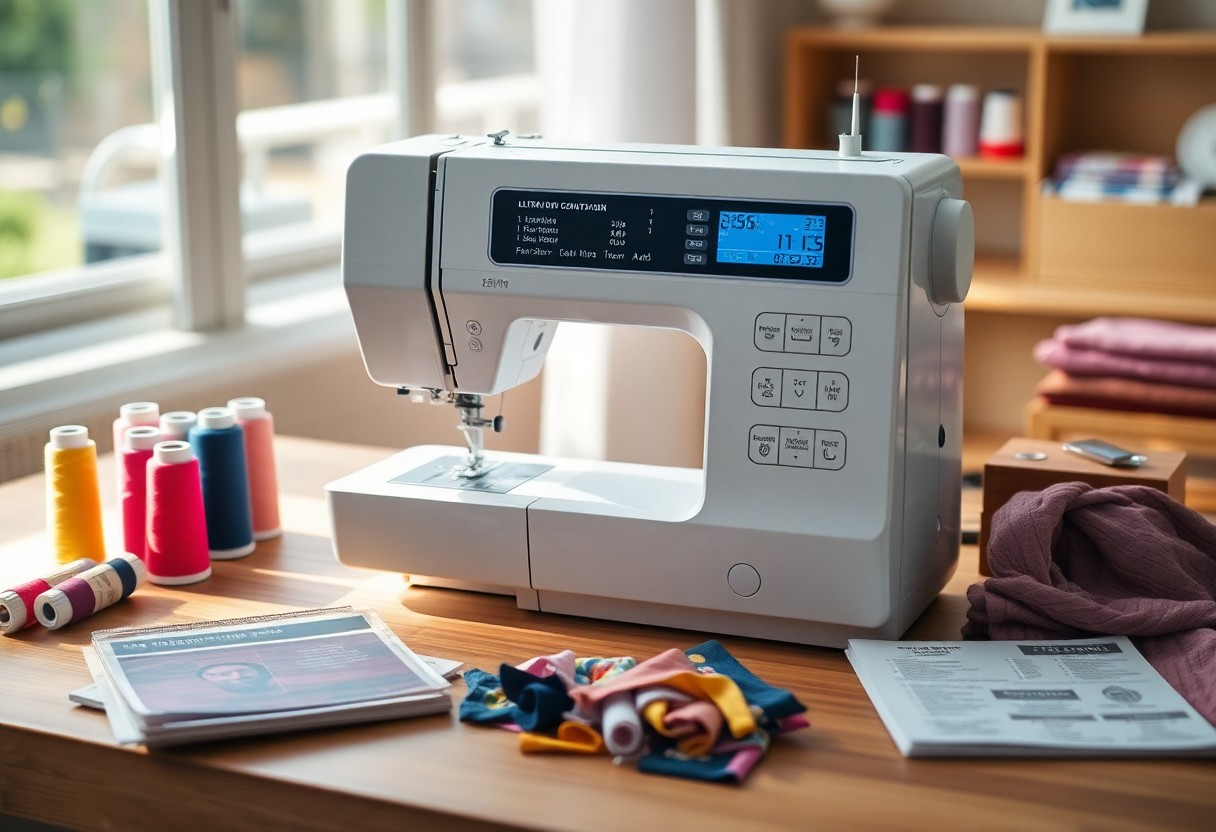It’s imperative to understand the benefits and drawbacks of computerized sewing machines before making a purchase. These machines offer a wide range of features that can enhance your sewing experience, from automated stitching to built-in designs. However, the initial cost can be a significant investment, and the learning curve may deter some users. By exploring the advantages and potential challenges, you can make an informed decision about whether a computerized sewing machine is the right addition to your crafting journey.
Many sewists wonder if computerized sewing machines are a sound investment for their craft. These machines offer enhanced features such as automated stitching, built-in patterns, and advanced controls that can significantly improve your sewing experience. However, the initial cost can be a concern, especially if you’re still developing your skills. In this post, we’ll break down the advantages and potential downsides of investing in a computerized model, helping you make an informed decision that aligns with your sewing needs.
Evaluating the Technological Leap in Sewing Machines
Advanced computerized sewing machines offer significant improvements over their mechanical predecessors. Key innovations include precision stitching, enhanced speed, and the ability to store and recall elaborate design patterns, which allows for more creative and complex sewing projects. As technology progresses, these machines become important tools for both hobbyists and professionals, streamlining the sewing process and expanding the potential for unique creations.
Innovation in Features: Stitch Variety and Automation
Your projects can benefit from an extensive range of built-in stitches available in modern machines. Typically, computerized models boast over 100 different stitch options, including specialty stitches, buttonholes, and even decorative designs. Automation features such as automatic needle threading and fabric feeding elevate your sewing experience by minimizing effort and maximizing efficiency, allowing you to focus on creativity rather than manual tasks.
User Interface Enhancements: Touch Screens and Software Integration
Recent advancements in sewing machine technology include user-friendly touch screens that simplify the selection of stitches and settings. Seamlessly integrating with software allows you to import custom designs, manage your projects, and even update your machine’s firmware, enhancing your overall sewing experience.
The introduction of touch screens in sewing machines has transformed how you interact with your equipment. For instance, models by brands like Brother and Bernina feature large, responsive displays that enable easy navigation through menus, making it simple to select stitches or adjust settings. Many machines also offer Wi-Fi connectivity, allowing you to download new patterns directly from your computer or mobile device. This integration not only enhances the functionality of your machine but also keeps it updated, ensuring you have access to the latest innovations in stitching technology.
The Evolution of Sewing Technology
The journey of sewing technology spans centuries, witnessing dramatic shifts from hand-stitched methods to sophisticated machines that have revolutionized the craft. Early sewing relied on simple tools and manual labor, but as the Industrial Revolution progressed, machines began to emerge, streamlining the process and enabling mass production. Today, computerized sewing machines represent the latest evolution, offering advanced features that enhance creativity and efficiency, allowing you to create intricate designs with remarkable precision.
A Look Back: The Transition from Mechanical to Computerized
The shift from mechanical to computerized sewing machines marked a significant turning point for both hobbyists and professionals. Mechanical machines required manual adjustments for various functions, making sewing a labor-intensive task. With the advent of computerized models, you gained access to features like LCD screens, automated stitch selection, and programmable patterns. This transition not only simplified the sewing process but also allowed for greater creativity and customization in your projects.
Key Innovations that Changed the Game
Several innovations have dramatically impacted sewing technology, making it more user-friendly and versatile. For instance, the introduction of overlock machines allowed you to achieve professional seam finishes at home. Automatic thread cutters streamline your workflow, while built-in stitch memory lets you save your favorite patterns for future use. Additionally, advancements in digitizing software have made it easier to create and transfer unique designs directly to your sewing machine.
Innovations such as self-threading needles and automatic tension adjustments have also shortened the learning curve, elevating your sewing experience. Patterns can now be easily scanned and imported, reducing the time spent on creation and increasing your productivity. The integration of Wi-Fi connectivity in some models allows you to download new designs straight to your machine, ensuring you stay on the cutting edge of sewing technology. Each of these advancements reflects a commitment to making sewing accessible and enjoyable, catering to both beginners and seasoned artisans alike.
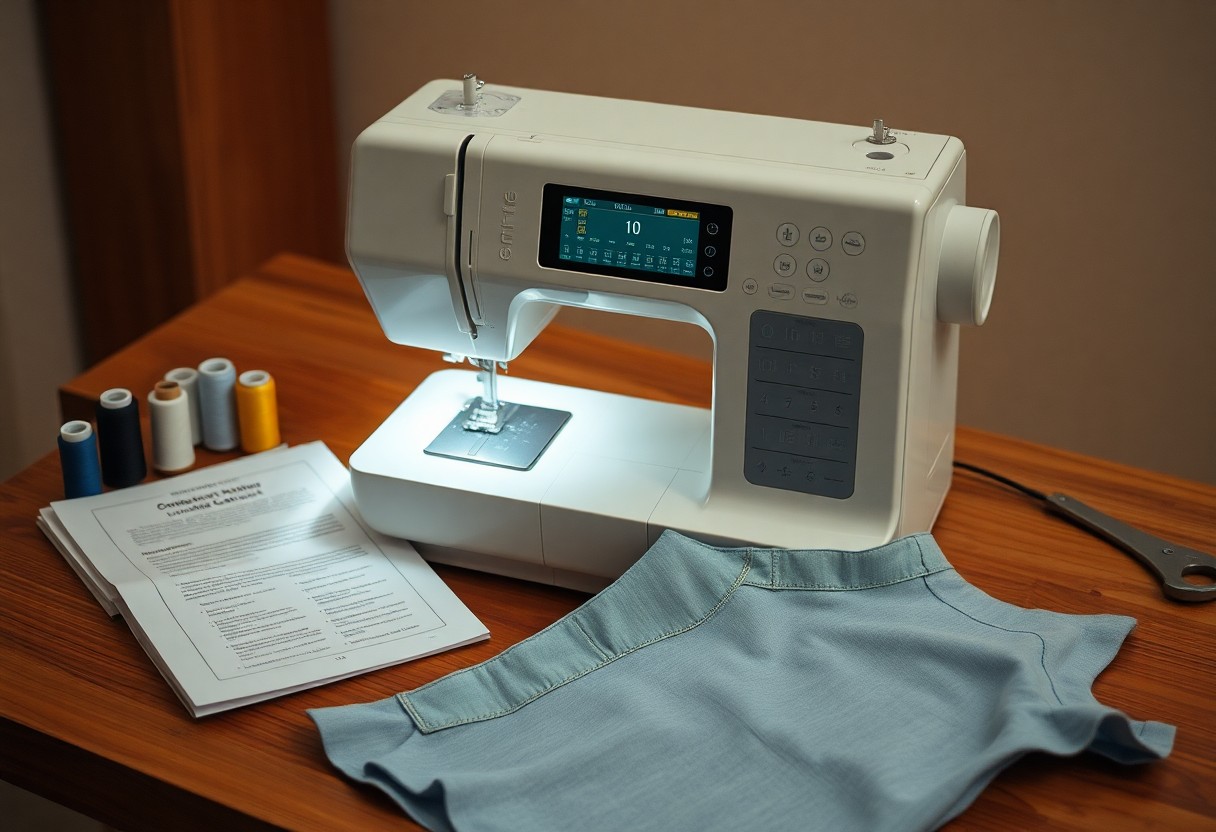
The Cost-Benefit Equation: Are They Worth It?
Evaluating the cost-benefit equation reveals that computerized sewing machines can be a wise investment for dedicated sewists. The initial price point may seem steep, but the advanced features, speed, and efficiency they offer often result in significant time savings and increased productivity. With the ability to create more intricate designs, you can expand your creative possibilities while potentially increasing your income if you sell your creations. Ultimately, weighing the upfront expense against the long-term benefits will help you determine if it’s a worthy investment for your sewing journey.
Initial Investment vs. Long-Term Savings
The initial investment for a computerized sewing machine typically ranges from $200 to over $10,000, depending on the model and features. However, when assessing long-term savings, consider the time and effort saved with automation, reduced fabric waste due to precision, and the potential revenue from selling finished products. Investing in a high-quality machine can pay off quickly as you become more skilled and efficient, ultimately enhancing your sewing experience and profitability.
Factors Influencing Price: Customization and Brand Impact
Price variation in computerized sewing machines depends on factors like brand reputation and the level of customization offered. Renowned brands often command higher prices due to their reliability and support services. Additionally, machines that offer unique features, such as extensive embroidery options or built-in tutorials, can raise the cost significantly. Investing in a trusted brand may enhance your sewing experience and longevity of the machine. Thou may find that quality often outweighs price when considering long-term performance.
Customization options also significantly impact the overall price of computerized sewing machines. Models that allow you to personalize settings such as stitch types, speeds, and automatic functions often come at a premium. The ability to upgrade with specific attachments or additional features tailored to your sewing needs can justify the investment for many users. As a result, determining how much you prioritize these customizable features can lead you to a machine that aligns with your creative goals. Thou may discover that the right features can elevate your projects immensely.
- Price variation
- Customization options
- Brand reputation
- Long-term performance
Breaking Down the Features: What Makes Them Unique?
Each advanced computerized sewing machine is equipped with a range of unique features that enhance your sewing experience. These innovations not only simplify your crafting projects but also expand your creative potential. Incorporating high-tech components, these machines provide an impressive blend of functionality and customization, making them a favorite among enthusiasts and professionals alike.
Advanced Stitch Options and Customization Capabilities
With numerous advanced stitch options, computerized machines allow you to tailor your creations to perfection. You can access a variety of stitch styles, patterns, and embellishments, enabling a high degree of personalization in your projects.
Features Overview
| Feature | Benefit |
| Built-in stitch patterns | Easily select from dozens of stitches for versatility. |
| Custom stitch creation | Design and save unique stitch patterns tailored to your preferences. |
| Adjustable stitch length and width | Modify stitch size for different fabric types or styles. |
| Memory function | Store frequently used settings for quick access. |
Built-in Embroidery Functions and Software Integration
Many computerized sewing machines now come with built-in embroidery functions that allow you to create intricate designs directly on your fabric. With intuitive software integration, you can connect your machine to a computer, enhancing your ability to customize and develop impressive projects.
These machines often include pre-installed embroidery designs and fonts, granting you the flexibility to choose from a vast array of options. Moreover, compatibility with design software means you can easily import your own creations or modify existing ones, pushing the limits of your sewing projects. This capability significantly broadens your creative possibilities, allowing for professional-quality embroidery without needing additional equipment.
The Learning Curve: Transitioning from Manual to Computerized Models
Transitioning from manual to computerized sewing machines involves adjusting to a plethora of new features and functionalities. While familiarizing yourself with digital settings can feel intimidating, the intuitive interfaces of many models simplify navigation. You’ll find that embracing these advancements will ultimately enhance your sewing capabilities, allowing for greater creativity and efficiency in your projects.
Upskilling Through Guided Tutorials and Resources
Many manufacturers offer comprehensive online tutorials and resources designed to help you familiarize yourself with your new machine. Leveraging these materials can drastically shorten your learning curve, with step-by-step videos and user manuals that provide hands-on guidance. You might also consider joining online sewing communities where experienced users share tips and troubleshoot common issues together.
Overcoming Common Challenges Faced by New Users
As a new user, you may encounter several challenges, including difficulty threading the machine, adjusting stitch settings, or navigating software updates. These hurdles can be discouraging, but addressing them head-on can boost your confidence. Familiarity with your model’s unique features is key; regular practice and immersing yourself in available resources will gradually alleviate frustrations.
Overcoming common challenges often involves practical experience. You might struggle with settings for different fabrics, leading to uneven stitches or skipped threads. This is where understanding your machine’s capabilities becomes necessary. Engaging in beginner sewing projects can help you practice adjusting tensions and stitch types according to fabric weight. Your proficiency will improve as you navigate these issues, turning initial setbacks into learning opportunities for your sewing journey.
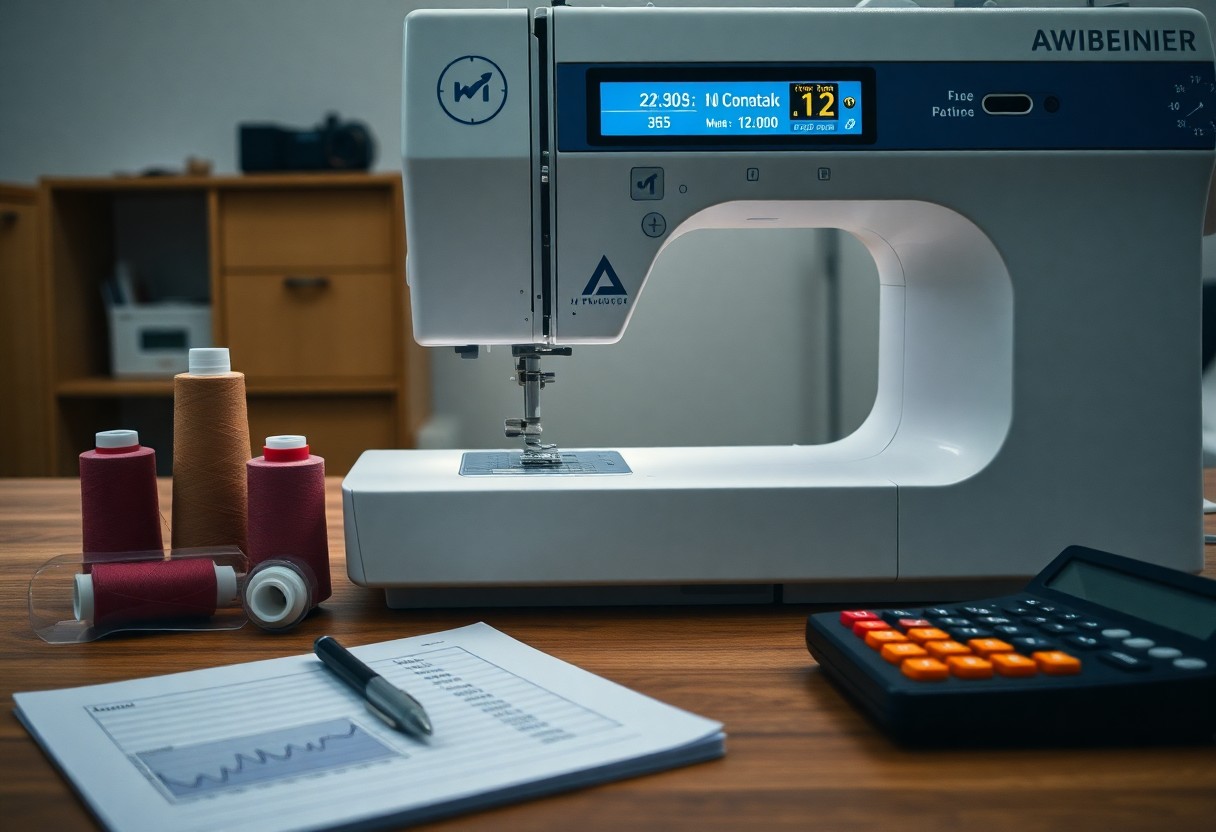
Cost Analysis: Are You Paying for Performance?
Initial Investment vs. Long-term Value
Choosing a computerized sewing machine often comes with a higher initial price. However, with features like faster stitching speeds, better precision, and enhanced automation, the long-term value can outweigh these upfront costs. Over time, you may save on repairs and enjoy a wider range of creative possibilities, which can lead to greater satisfaction in your sewing projects.
Comparing Cost with Traditional Machines and Their Limitations
Traditional sewing machines typically require less initial investment but may come with limitations that hinder your creativity and efficiency. Features like a limited stitch selection, slower speeds, and manual adjustments can slow you down, impacting the overall quality of your work. In comparison, computerized machines often justify their higher prices through versatility and functionality.
Cost Comparison of Computerized vs. Traditional Machines
| Feature | Computerized Machines |
|---|---|
| Initial Cost | Higher ($200 – $10,000) |
| Stitch Options | Numerous (100+ styles) |
| Speed | Fast (up to 1,000 stitches/min) |
| Learning Curve | Moderate (advanced features require time) |
While traditional machines are often less expensive, their limitations can restrict your sewing capabilities. Fewer stitch options and manual setup can lead to longer project times and less creative freedom. You could find that investing in a computerized machine mitigates these issues, as the features allow for greater efficiency and improved outcomes, ultimately saving time and enhancing your sewing experience.
Limitations of Traditional Machines
| Limitation | Impact |
|---|---|
| Limited Stitch Variety | Less creativity in projects |
| Manual Settings | Time-consuming adjustments |
| Slower Speed | Longer project completion times |
| Durability Costs | More frequent repairs may be needed |
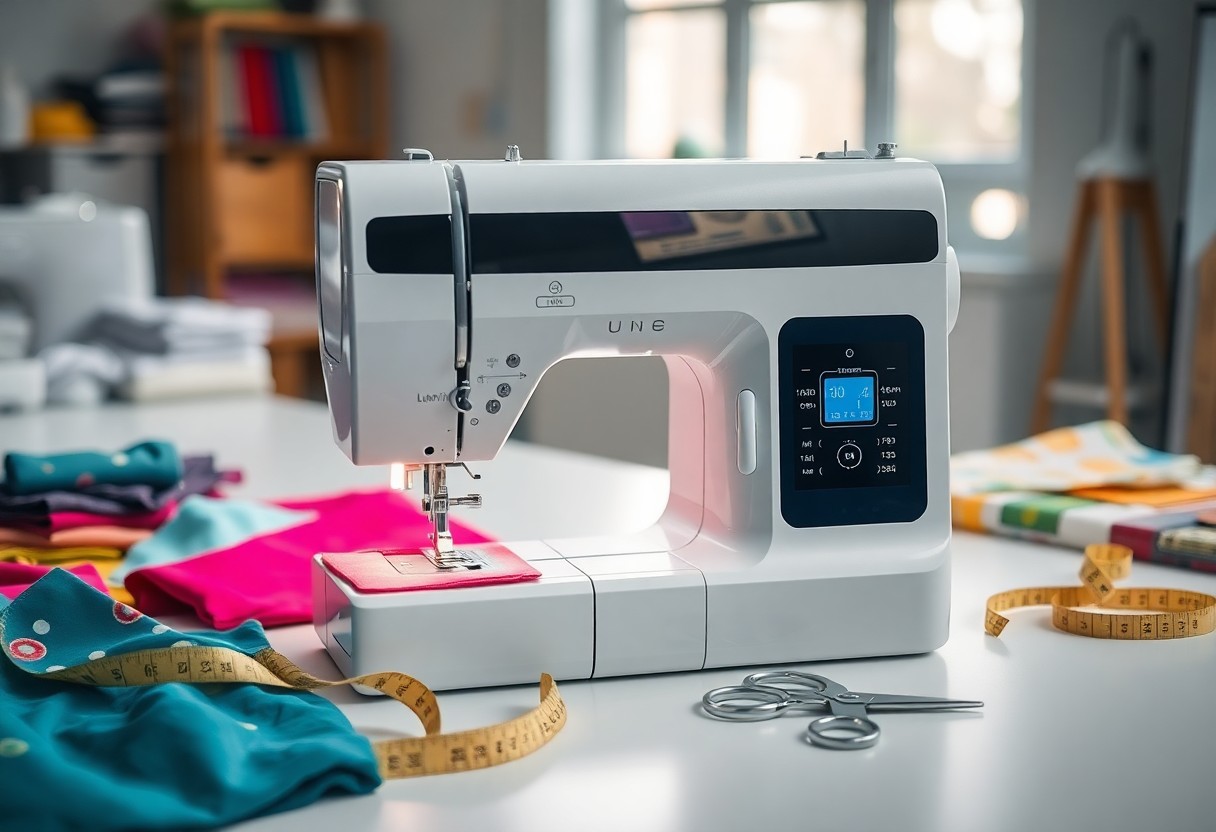
User Experiences: What Sewists Are Saying
Feedback from the sewing community is overwhelmingly positive regarding computerized sewing machines. Many users appreciate the precision and ease of use these machines offer, particularly for intricate designs and patterns. Sewists often highlight features like built-in tutorials and automatic threading, which enhance the overall experience. However, some express concerns about the learning curve associated with new technology and potential maintenance costs. Overall, your investment can lead to substantial improvements in your sewing projects.
Pros and Cons from the Sewing Community
Pros and Cons
| Pros | Cons |
|---|---|
| Increased precision | Higher initial cost |
| Built-in stitching options | Learning curve for new users |
| Automated features | Potential repair expenses |
| Time-saving programming | Dependence on electronics |
| Consistent results | Limited user customization |
| Ability to handle complex designs | Software updates may be needed |
| User-friendly interfaces | Less tactile experience |
| Built-in tutorials | Less durable than mechanical options |
| Accessory compatibility | Can be overwhelming for beginners |
| Improved capabilities for various projects | Potential for technical issues |
Specific Use Cases that Highlight Benefits and Drawbacks
Distinct scenarios can illustrate both the advantages and disadvantages of computerized sewing machines. For example, if you frequently work on intricate quilt designs, the precision and automated stitching options are invaluable, enabling you to achieve professional results more quickly. Conversely, if you prefer to sew simple, traditional projects, you may find the complexity and cost of these machines unjustified. New sewists may struggle initially with features that overwhelm, while advanced sewists could miss the tactile feedback of mechanical machines. Each use case provides insight into how these machines can elevate or complicate your sewing experience.
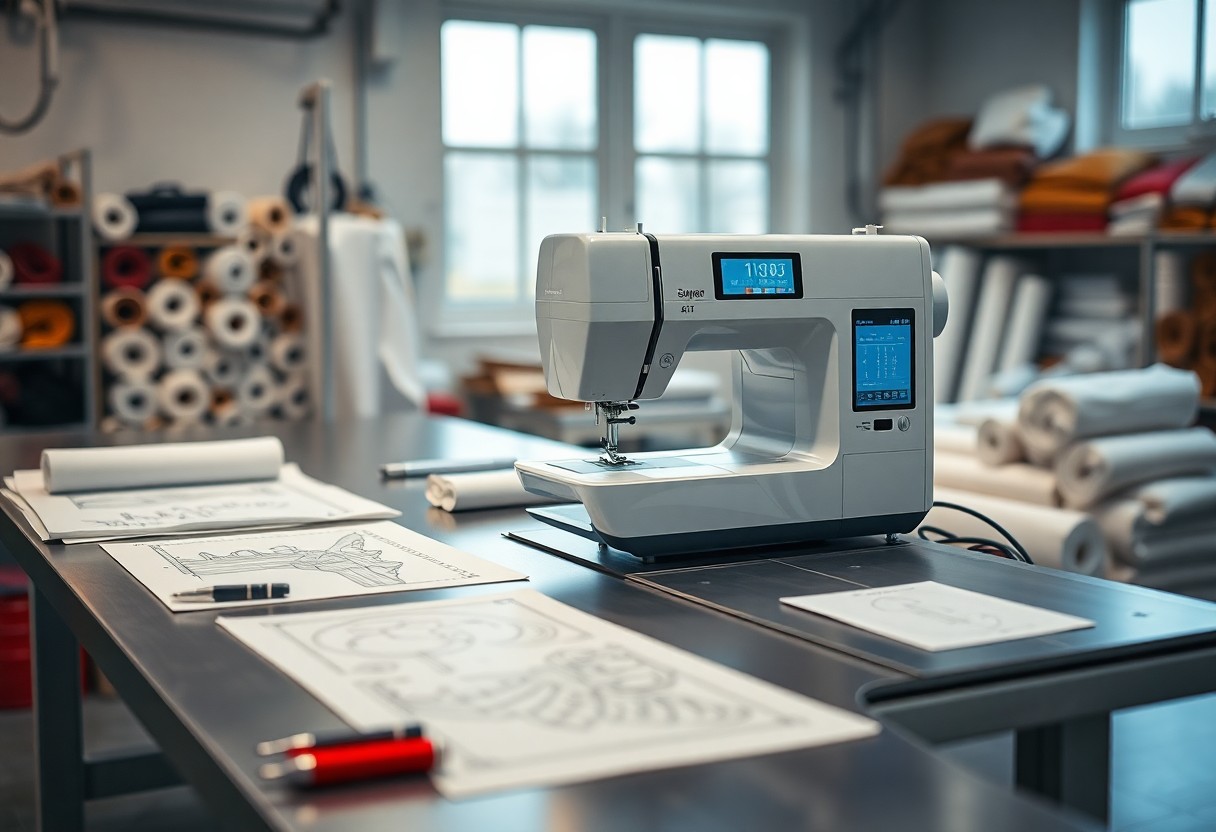
Beyond Basics: Advanced Functions That Revolutionize Sewing
Advanced computerized sewing machines offer a range of high-tech features that elevate your sewing experience. These machines are not just about basic stitching; they enable intricate designs and streamline your projects with ease. You can explore a multitude of functions that cater to both novice and experienced sewists, enhancing your creativity and efficiency.
- Automatic needle threading
- Built-in stitch patterns
- Adjustable stitch length and width
- Touchscreen controls
- Specialty presser feet
- Memory storage for personalized settings
Advanced Features Overview
| Feature | Description |
| Embroidery Functions | Allows for intricate designs and patterns, enhancing creativity. |
| Digitizing Software Compatibility | Enables you to create custom embroidery designs from scratch. |
| Sewing Automation | Streamlines processes like buttonholes and zippers, saving you time. |
Embroidery and Monogramming Capabilities
With built-in embroidery and monogramming capabilities, these machines can transform basic projects into personalized masterpieces. Features include a variety of fonts and design templates, enabling you to add names, initials, or intricate motifs to your creations. This capability not only elevates your work but also offers a unique touch to gifts and home decor.
Integration with Design Software for Creative Freedom
Seamless integration with design software allows for a limitless canvas where your imagination can thrive. You can create custom designs tailored to your taste and import them directly to the machine for stitching. This feature facilitates professional-level embroidery and quilting, giving you the ability to produce complex designs effortlessly.
Utilizing design software further expands your creative horizons. Many models support popular programs like Adobe Illustrator or specialized embroidery software, allowing you to craft unique designs or modify existing ones. You can manipulate elements like colors, sizes, and placements, providing you with the flexibility to realize your artistic vision with precision. This integration not only enhances your skill set but also leads to an increase in the marketability of your crafted items.
Finding the Right Fit: Choosing the Best Machine for Your Needs
Selecting a computerized sewing machine requires careful consideration of your specific needs and preferences. Assessing your sewing goals, the types of projects you want to undertake, and your budget will help you narrow down your options. Evaluate features such as stitch variety, speed, and ease of use that align with your sewing aspirations to ensure you make an informed choice.
Identifying Your Sewing Style and Skill Level
Your sewing style and skill level significantly influence the machine that will suit you best. Beginners often benefit from user-friendly models with intuitive interfaces and basic features, while advanced sewists may seek out machines with extensive capabilities, like customizable stitches and embroidery functions. An honest self-assessment of your sewing journey will guide you toward the right fit.
Recommended Models for Beginners, Intermediates, and Experts
Various models cater to different skill levels, ensuring each user finds the perfect sewing machine. For beginners, machines like the Brother CS6000i provide ease of use and versatility. Intermediate users may prefer models like the Janome Magnolia 7330, offering additional features without overwhelming complexity. Experts often gravitate toward advanced machines like the Bernina 790 Plus, known for its robust functionality and professional-grade results.
For beginners, the Brother CS6000i stands out with its automatic needle threader and 60 built-in stitches, making the learning curve manageable. Intermediate sewists might appreciate the Janome Magnolia 7330’s expanded stitch options and solid construction, which facilitates creativity while remaining user-friendly. Experts, seeking top-tier quality, often choose the Bernina 790 Plus, known for its precision and adaptability, offering features that support intricate projects from quilting to embroidery. Investing in the appropriate model tailored to your skill level ensures a satisfying and productive sewing experience.
Real-Life Experiences: Unlocking the Benefits and Drawbacks
Exploring real-life experiences with computerized sewing machines presents both inspiring examples and cautionary tales. Many users report significant time savings and greater accuracy in their projects, while others express frustration over learning curves and maintenance requirements. Understanding these personal narratives can help gauge how a computerized machine fits into your sewing habits.
Testimonials from Professional and Hobbyist Sewers
Professional and hobbyist sewers alike share a wealth of insights regarding computerized machines. Many professionals emphasize the efficiency and precision they’ve gained, citing the ability to create intricate designs quickly. Hobbyists often appreciate features such as built-in tutorials and automatic threading, which make sewing more accessible and enjoyable, although some miss the tactile experience of manual machines.
Expert Opinions: When a Computerized Machine Makes Sense
Experts recommend computerized sewing machines for projects requiring complex stitches or patterns. If your sewing ambitions include quilting, embroidery, or multi-layered fabrics, a computerized model can enhance your capabilities significantly. They also suggest that those who sew frequently or undertake large projects should consider the long-term time and effort savings that automation provides.
Professionals highlight that computerized machines excel in areas like monogramming or auto-patterning, which can save hours of labor. For instance, a quilter focusing on precision could benefit from a machine offering precise stitch placement features, maximizing creativity while minimizing manual adjustments. Additionally, pre-programmed stitches and error alerts can prevent costly mistakes, making these machines ideal for both extensive and intricate projects.
Final Words
On the whole, investing in a computerized sewing machine can significantly enhance your sewing experience, offering you advanced features and greater efficiency. You will find a multitude of functions and ease-of-use benefits that can make projects simpler and more enjoyable. If you sew frequently or aspire to take on complex designs, the investment can pay off in time saved and improved results. Ultimately, these machines can help you elevate your creativity while simplifying the sewing process.
Conclusion
Taking this into account, investing in a computerized sewing machine can significantly enhance your sewing experience. These machines offer advanced features that improve efficiency and precision, making complex projects easier to tackle. If you regularly sew or aspire to expand your skills, the benefits of a computerized machine justify the investment. Ultimately, you should weigh your sewing needs against your budget to determine if this upgrade aligns with your creative goals.
FAQ
Q: What are the main features of computerized sewing machines?
A: Computerized sewing machines typically offer features such as automatic stitch selection, digital display screens, built-in embroidery designs, adjustable stitch settings, and programmable patterns. These machines often include advanced technology for precise stitching and can save time with automated functions like threading and cutting threads.
Q: How do computerized sewing machines compare to mechanical ones in terms of ease of use?
A: Computerized sewing machines are generally more user-friendly than mechanical ones, as they provide intuitive interfaces and guided functions. New users can benefit from easy navigation through digital menus and automatic settings, reducing the learning curve compared to the hands-on adjustments required by mechanical machines.
Q: Are computerized sewing machines more expensive and do they offer better value?
A: Yes, computerized sewing machines tend to be more expensive than mechanical options. However, they often offer a wider range of capabilities and features that justify the investment, especially for serious hobbyists or professionals. The ability to enhance creativity and efficiency can lead to better long-term value.
